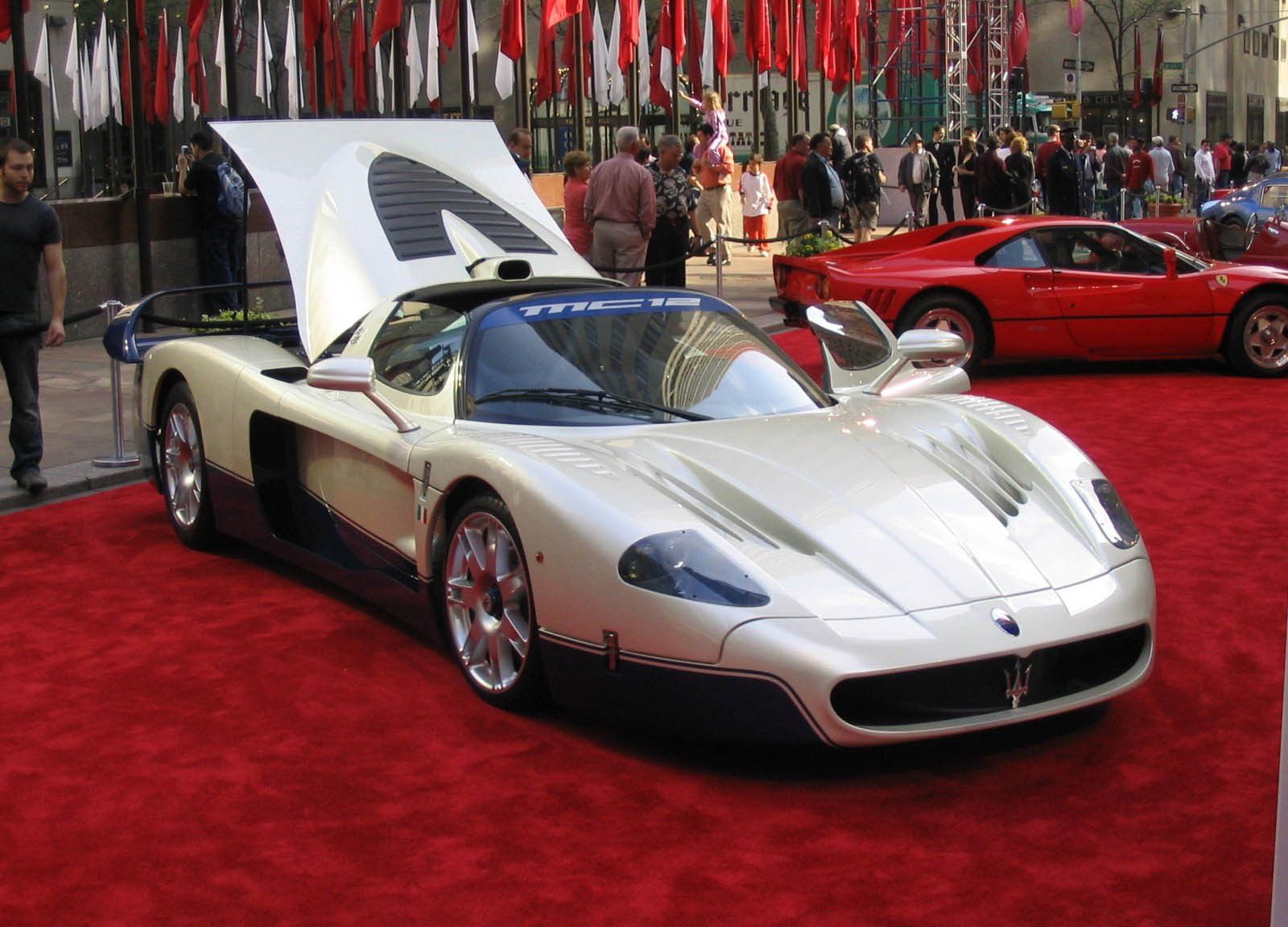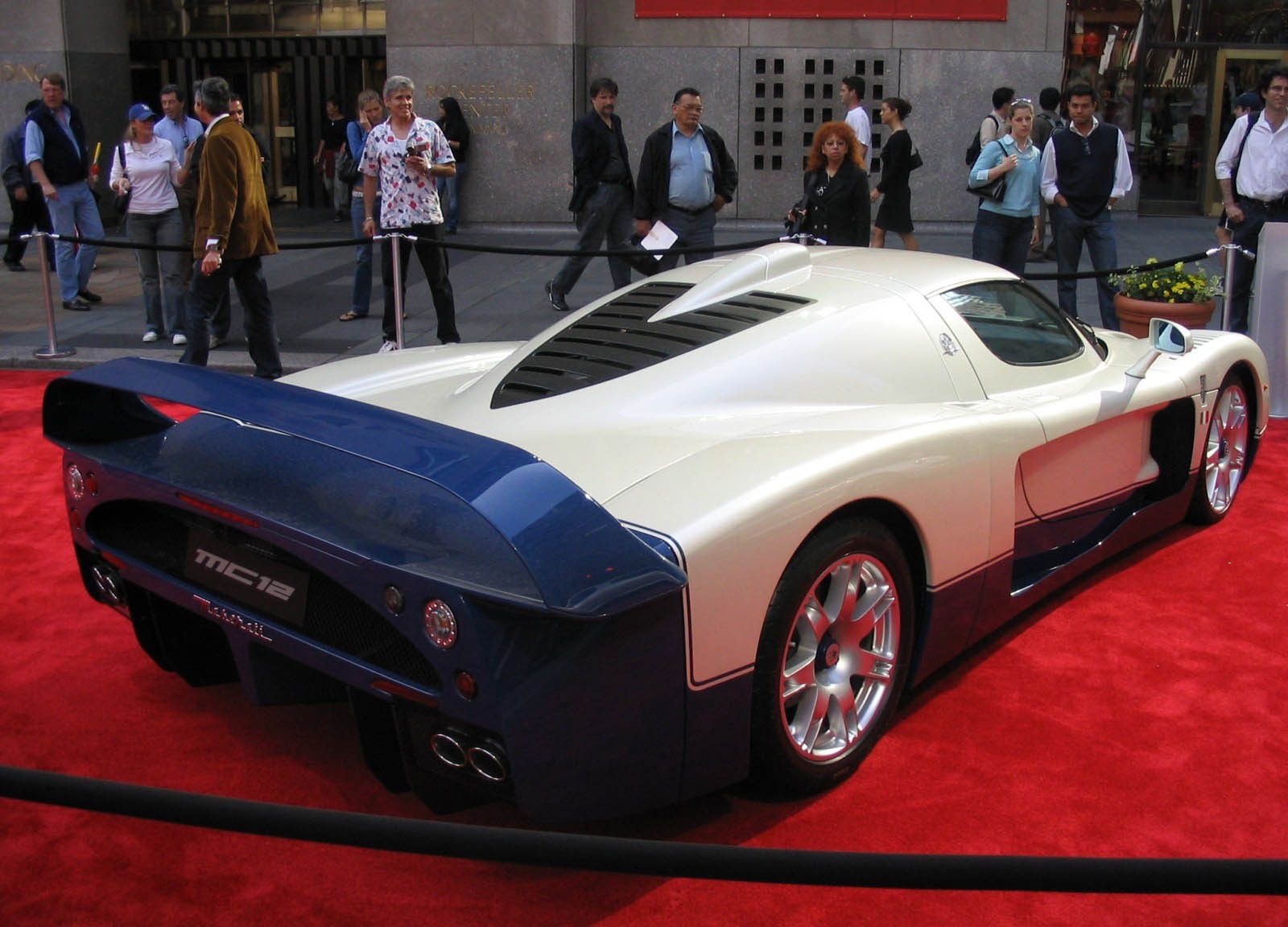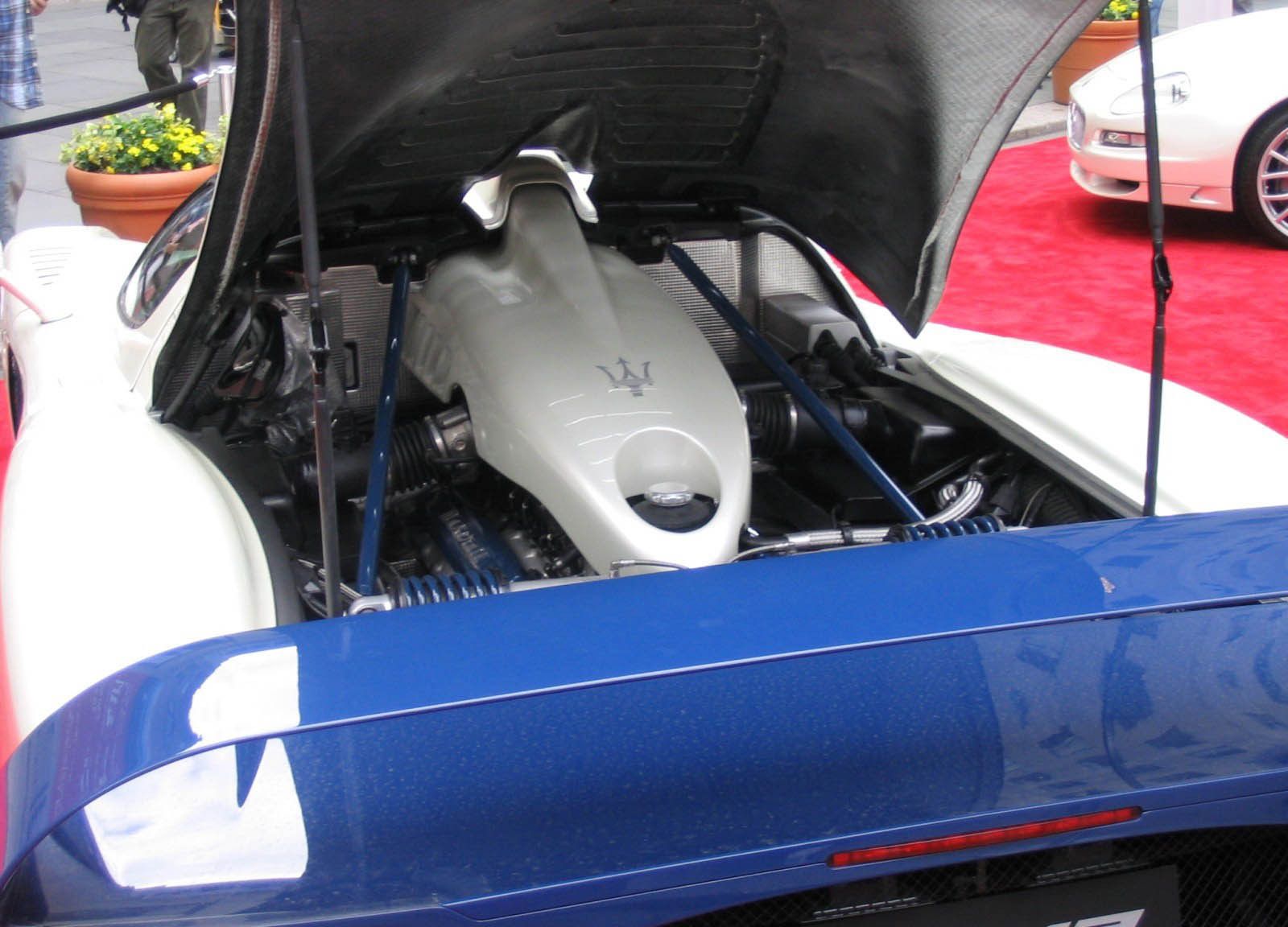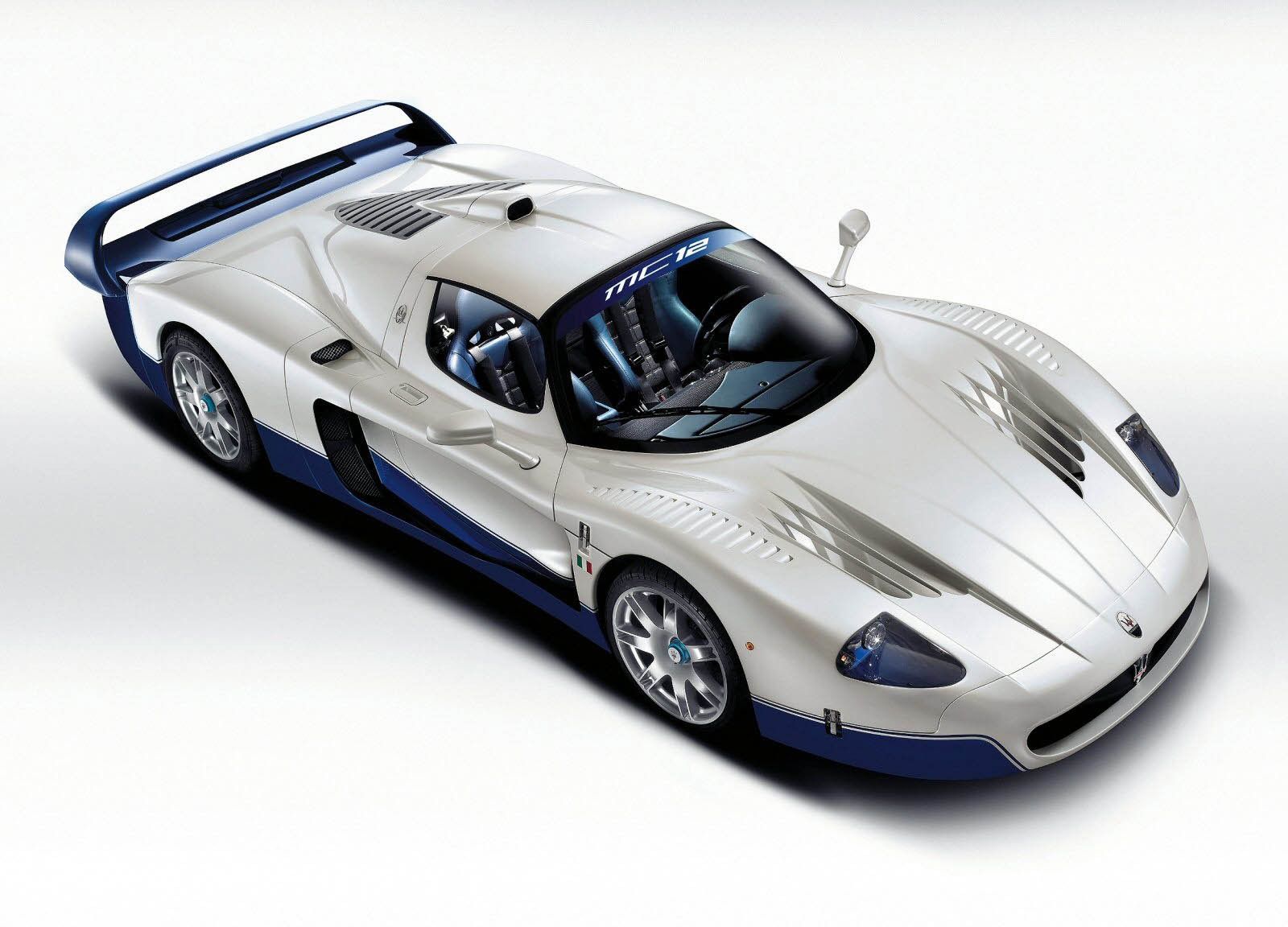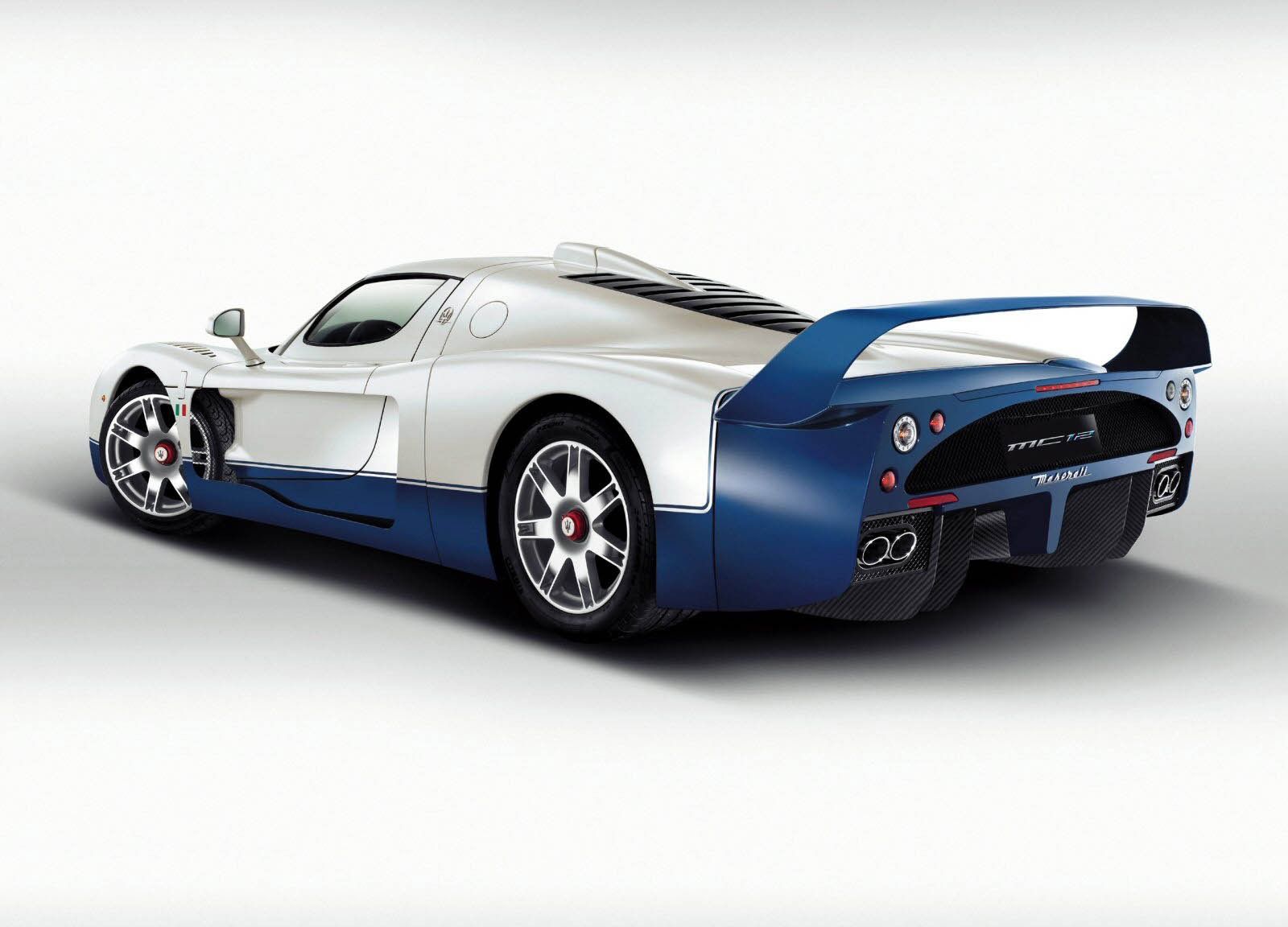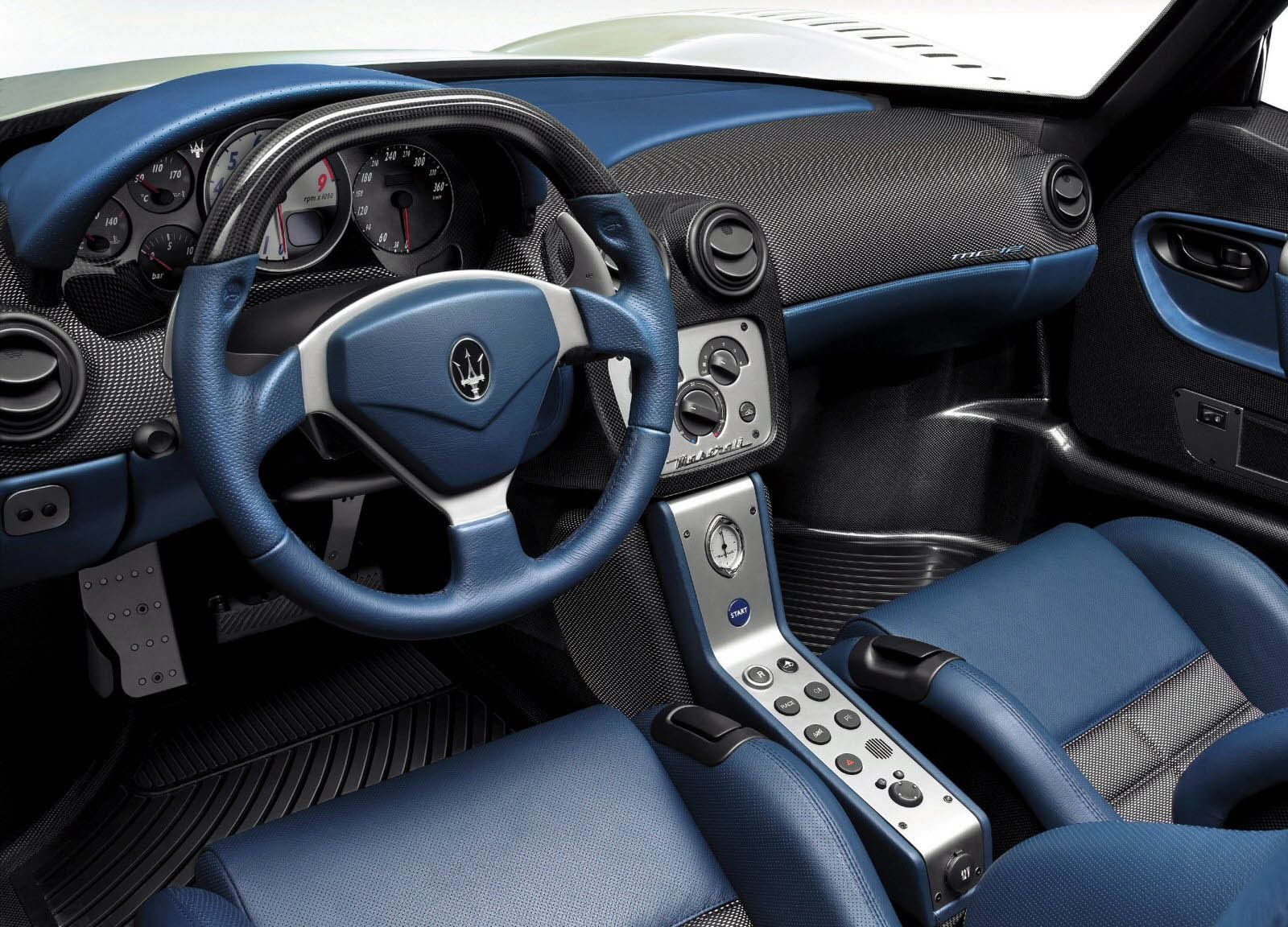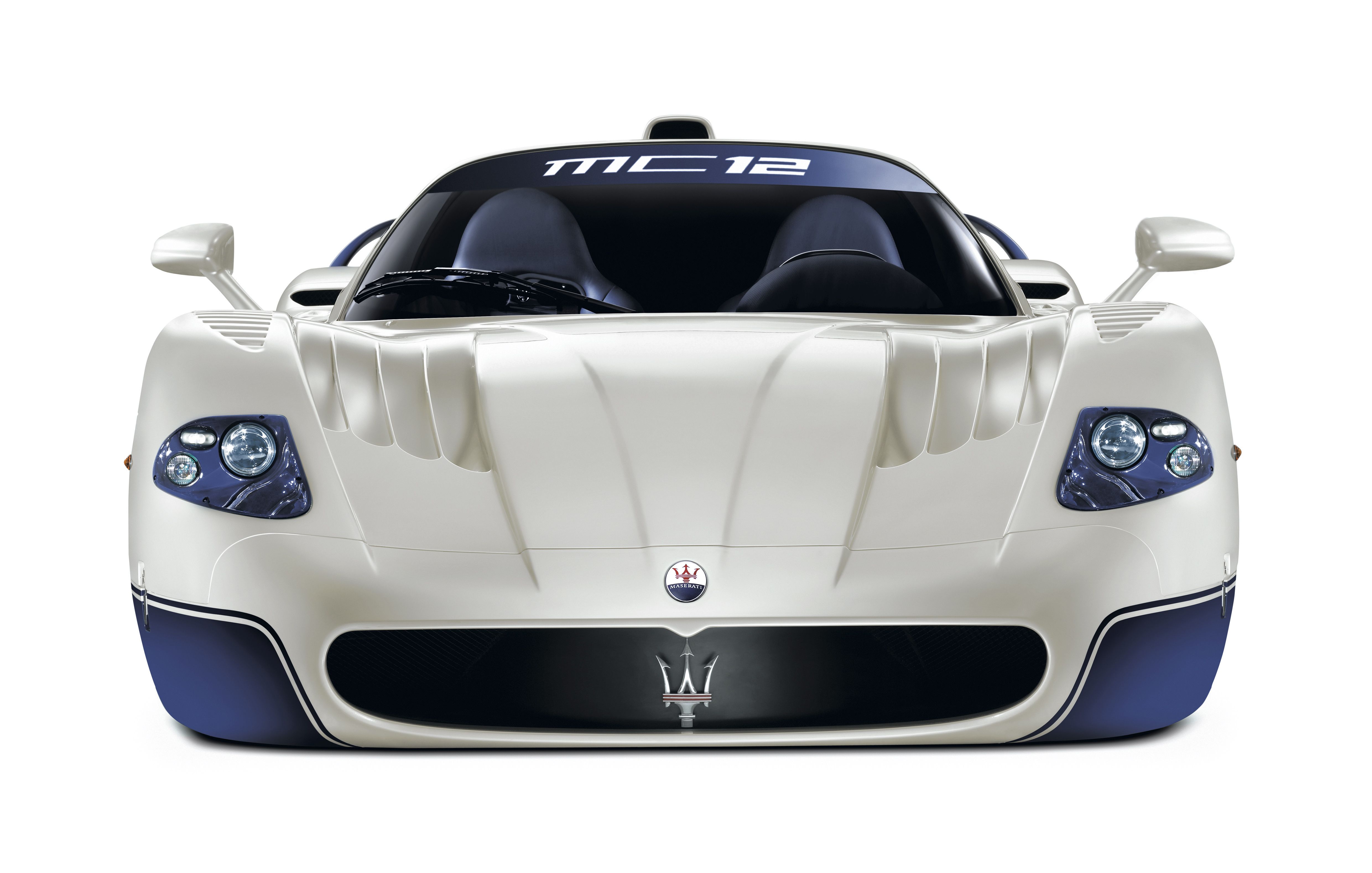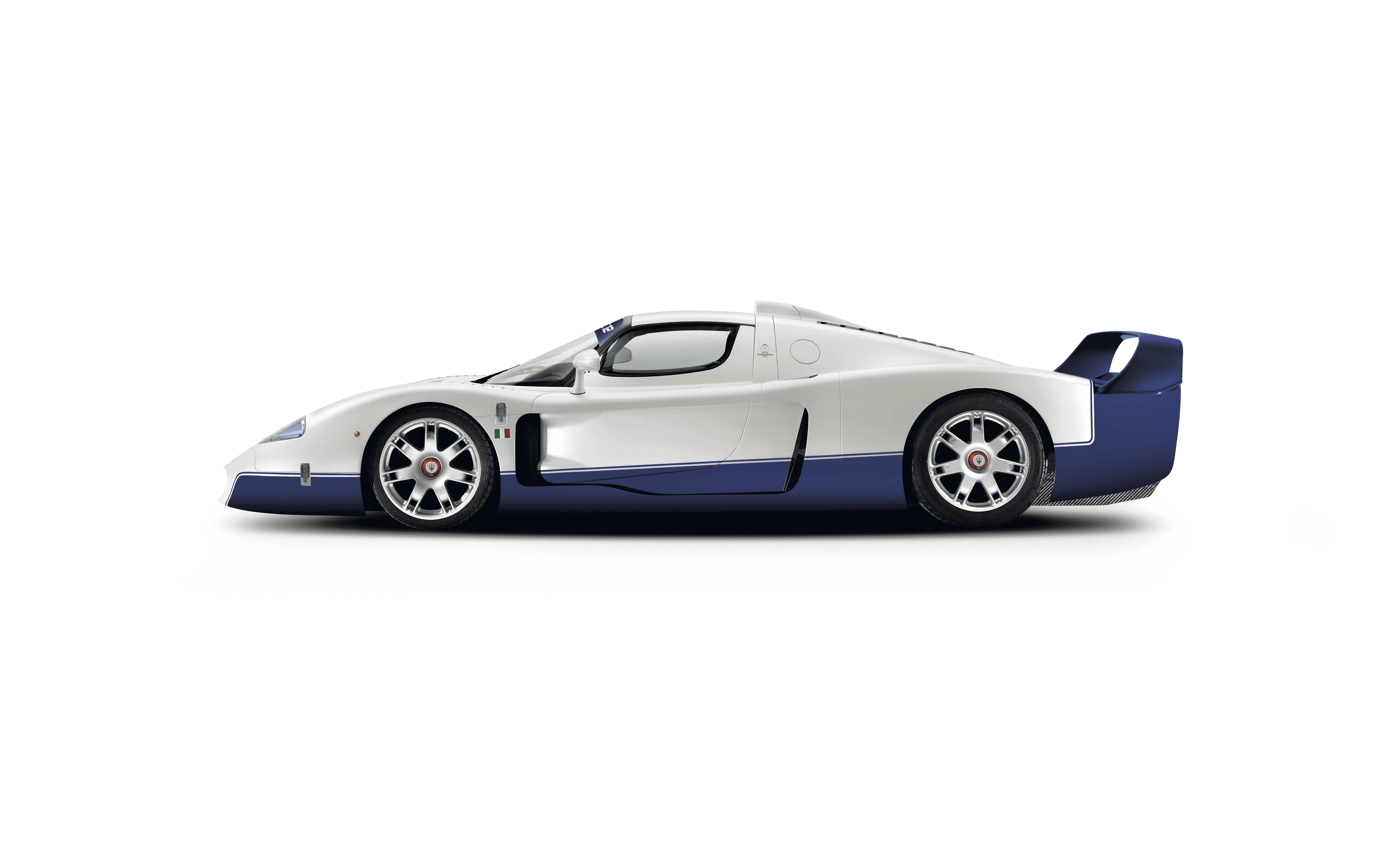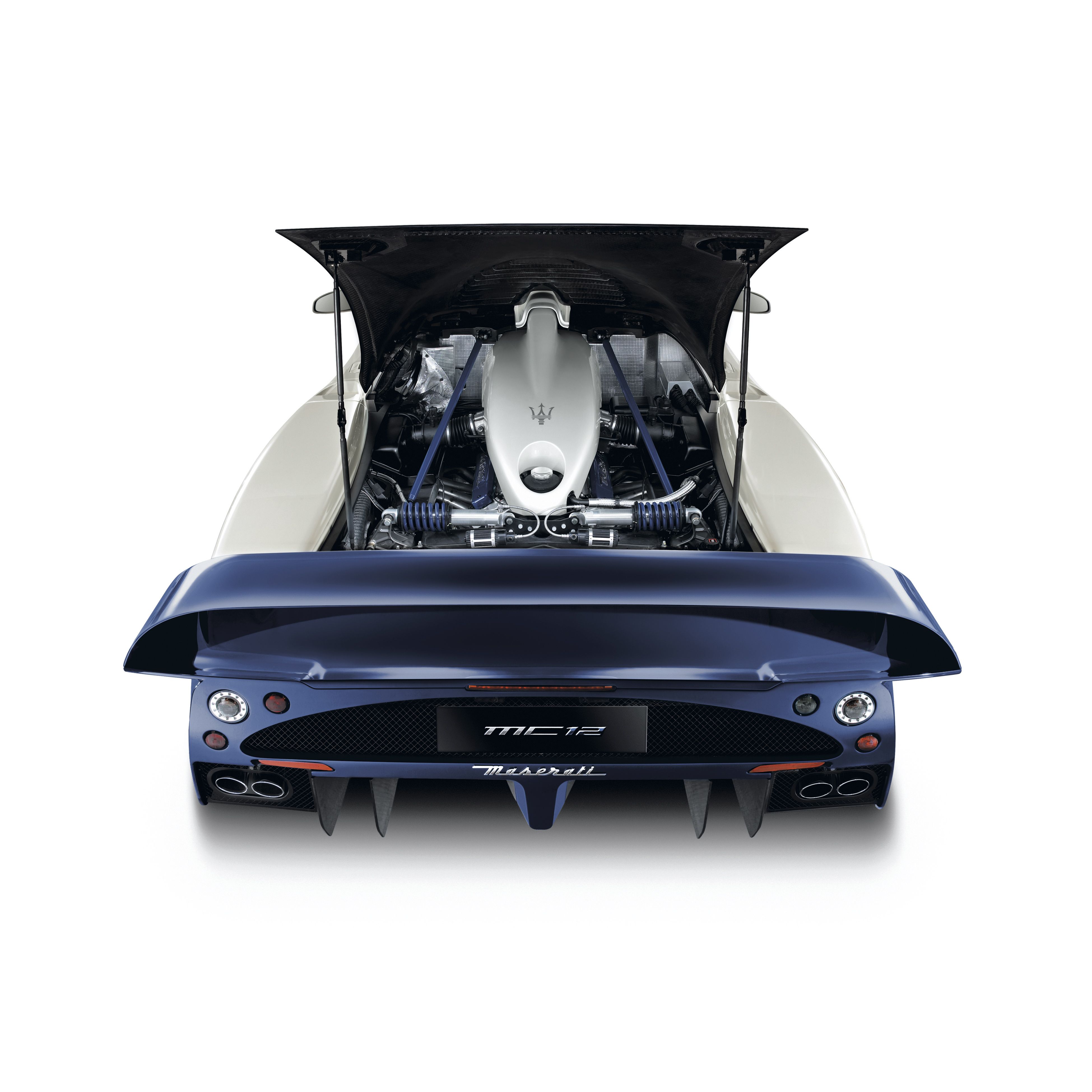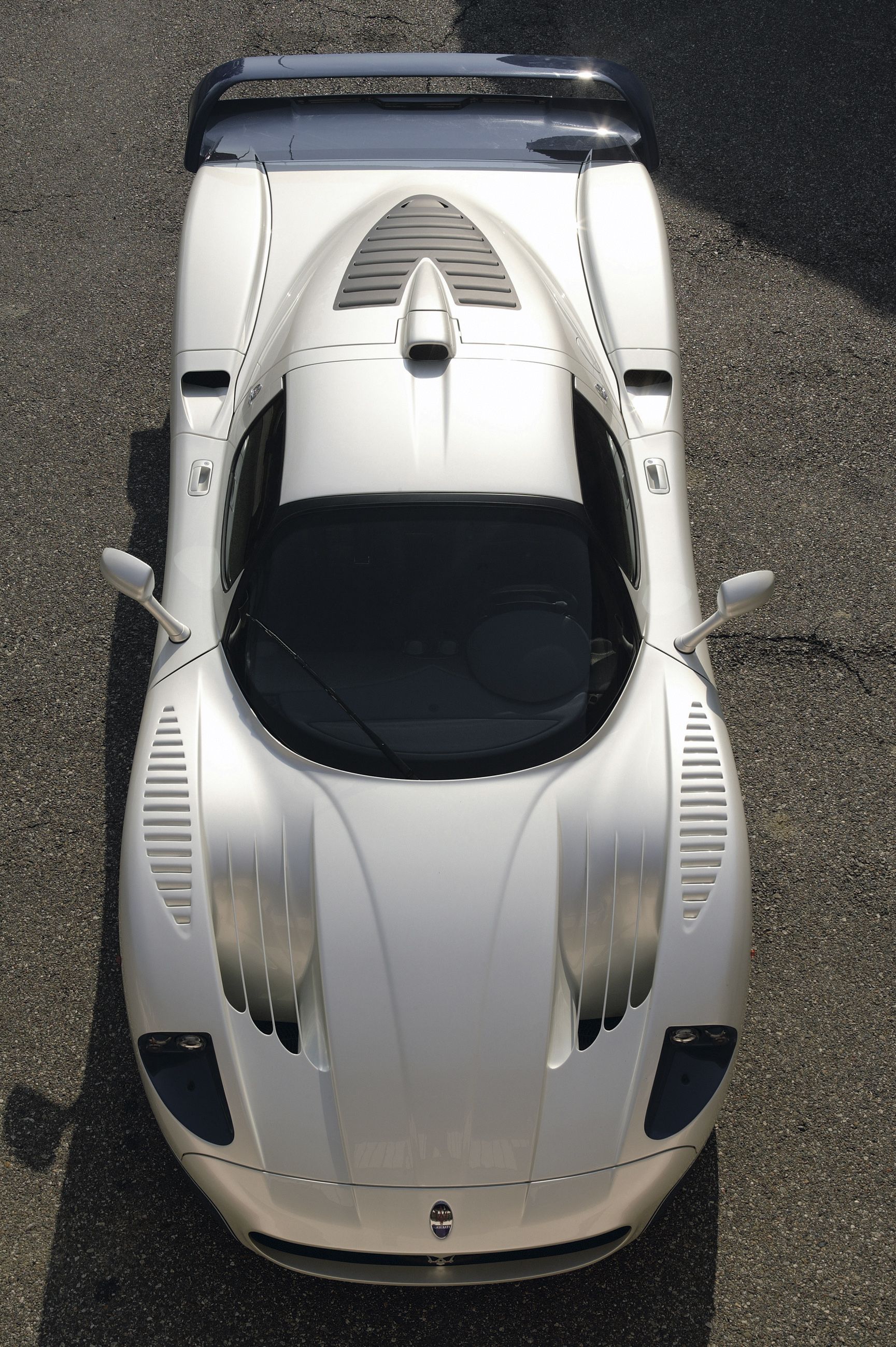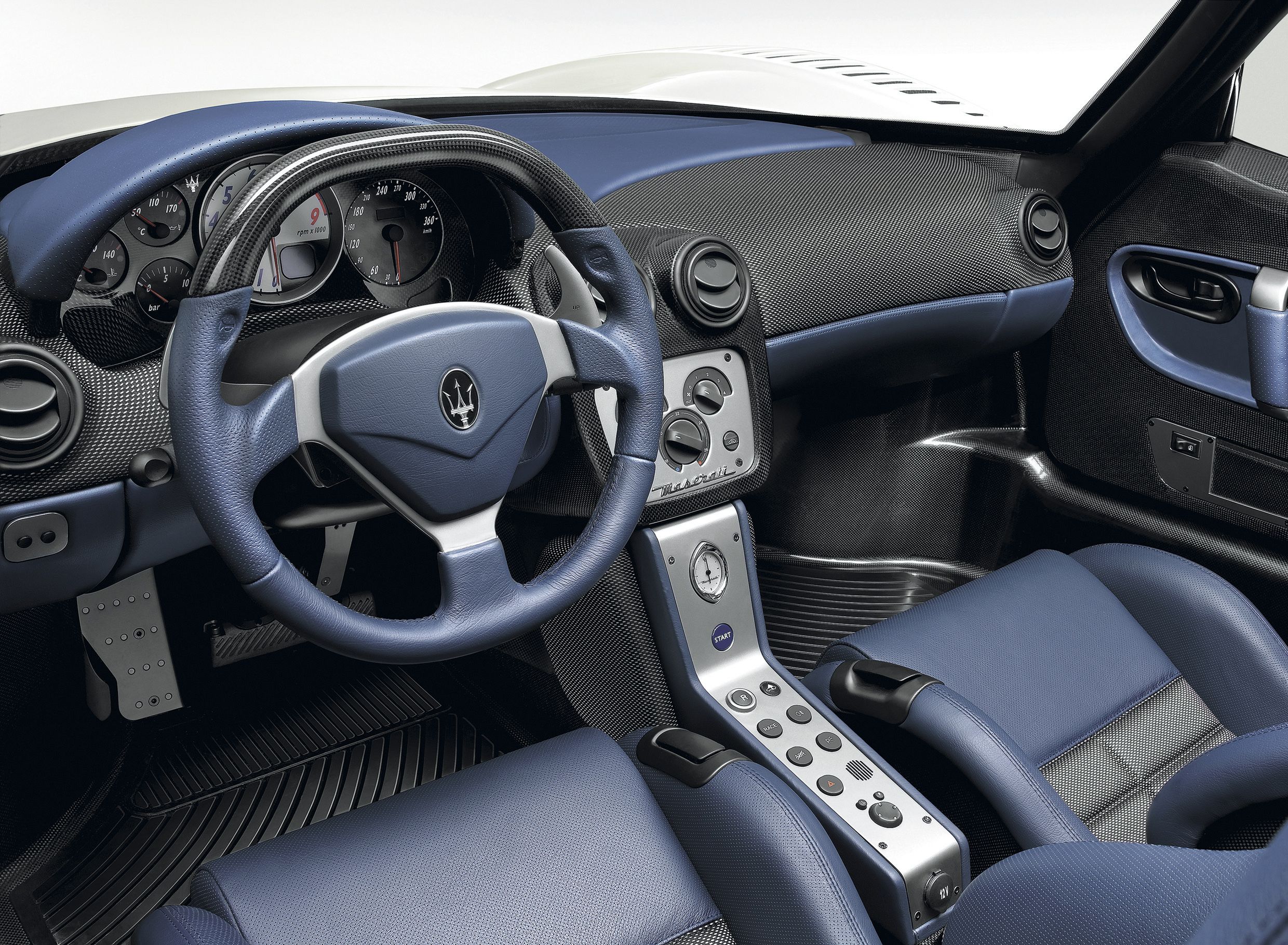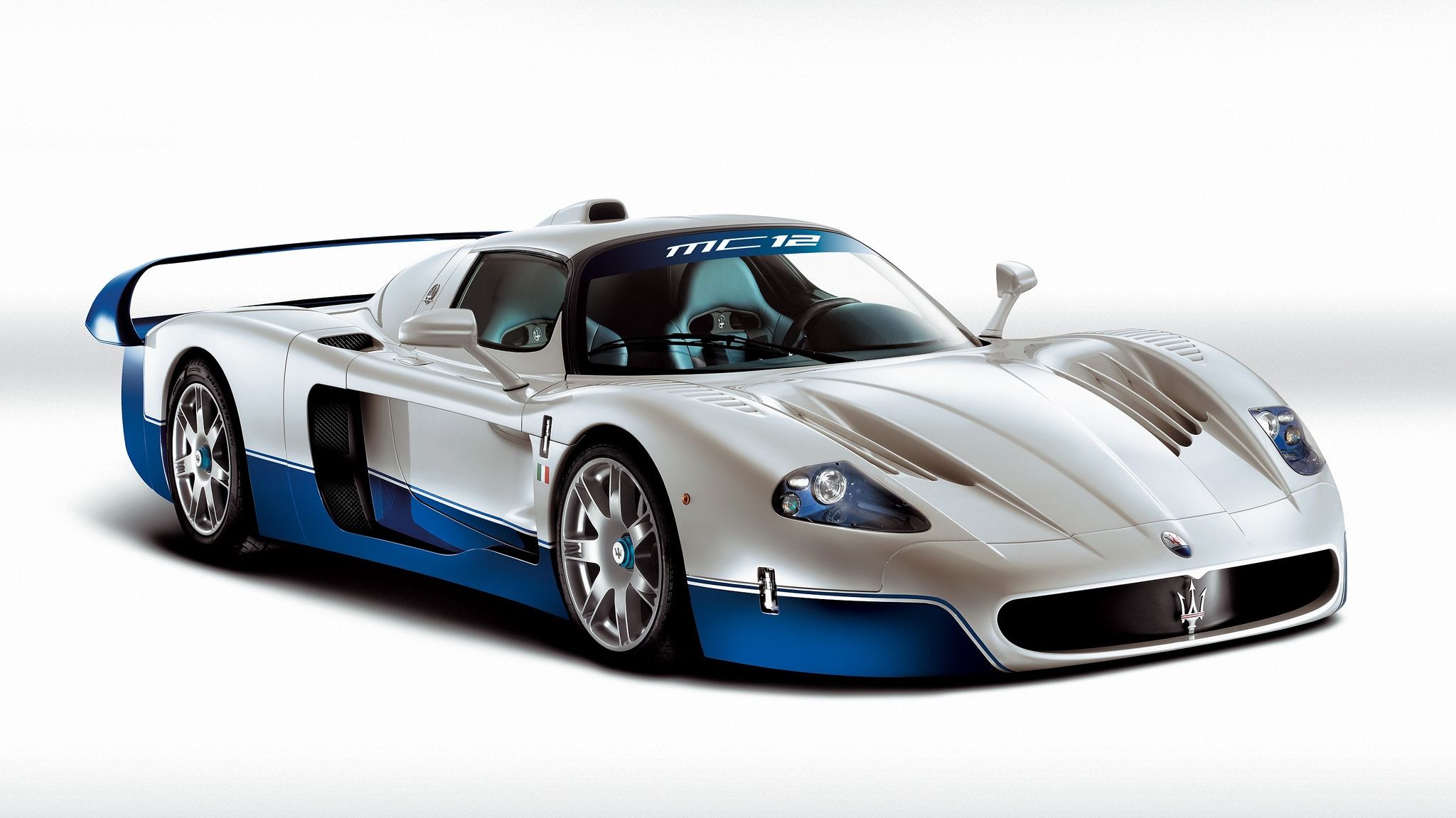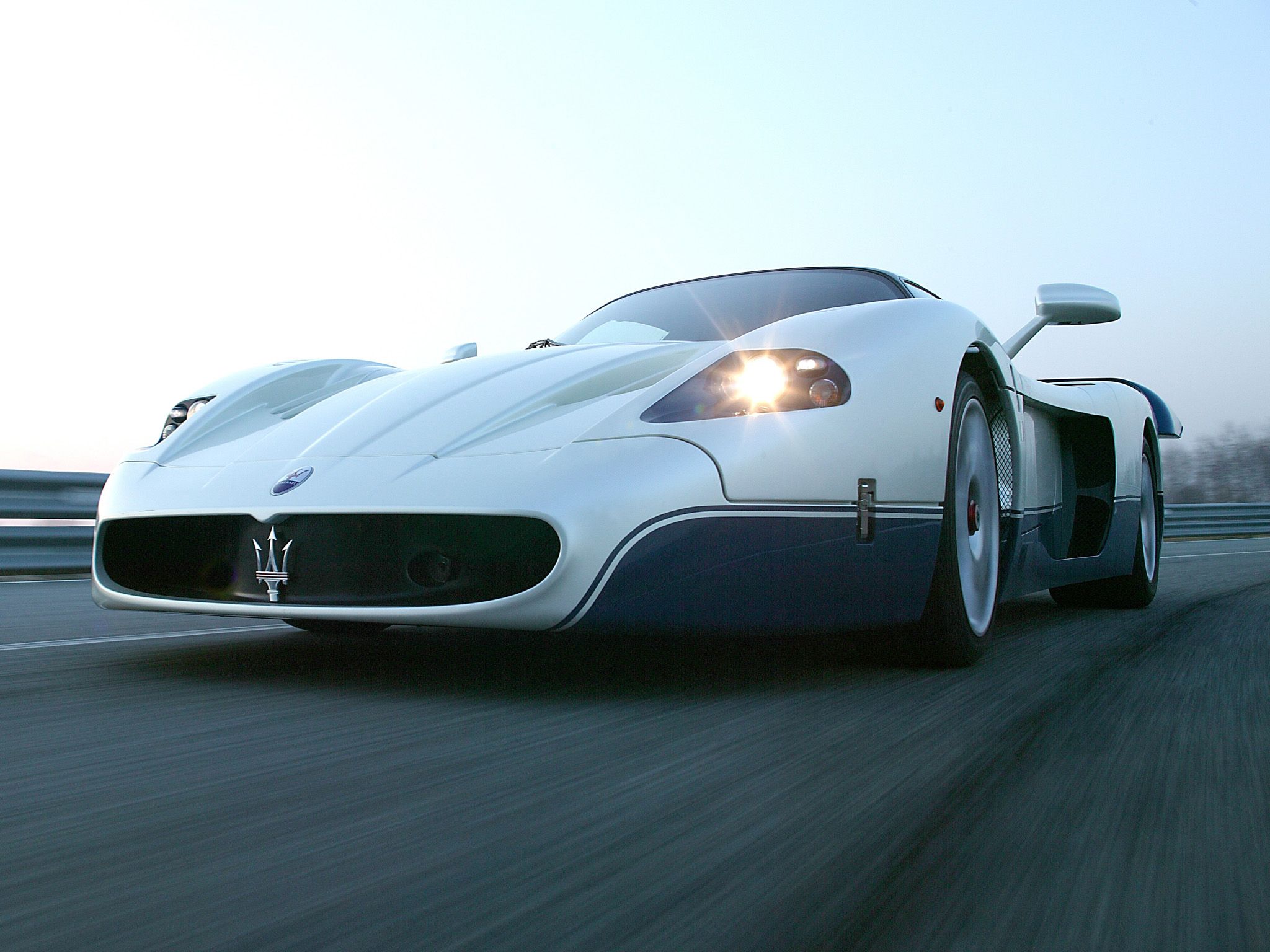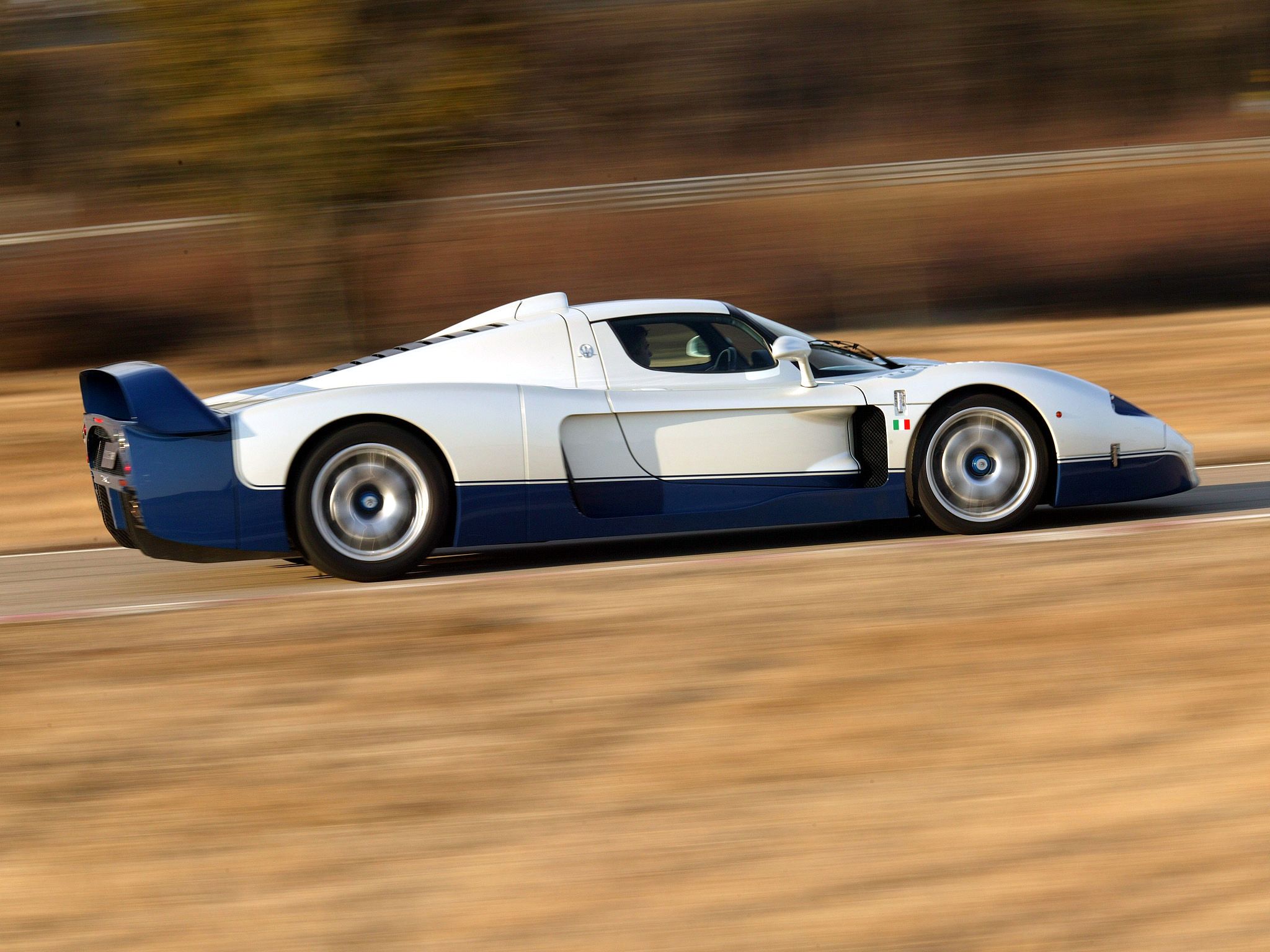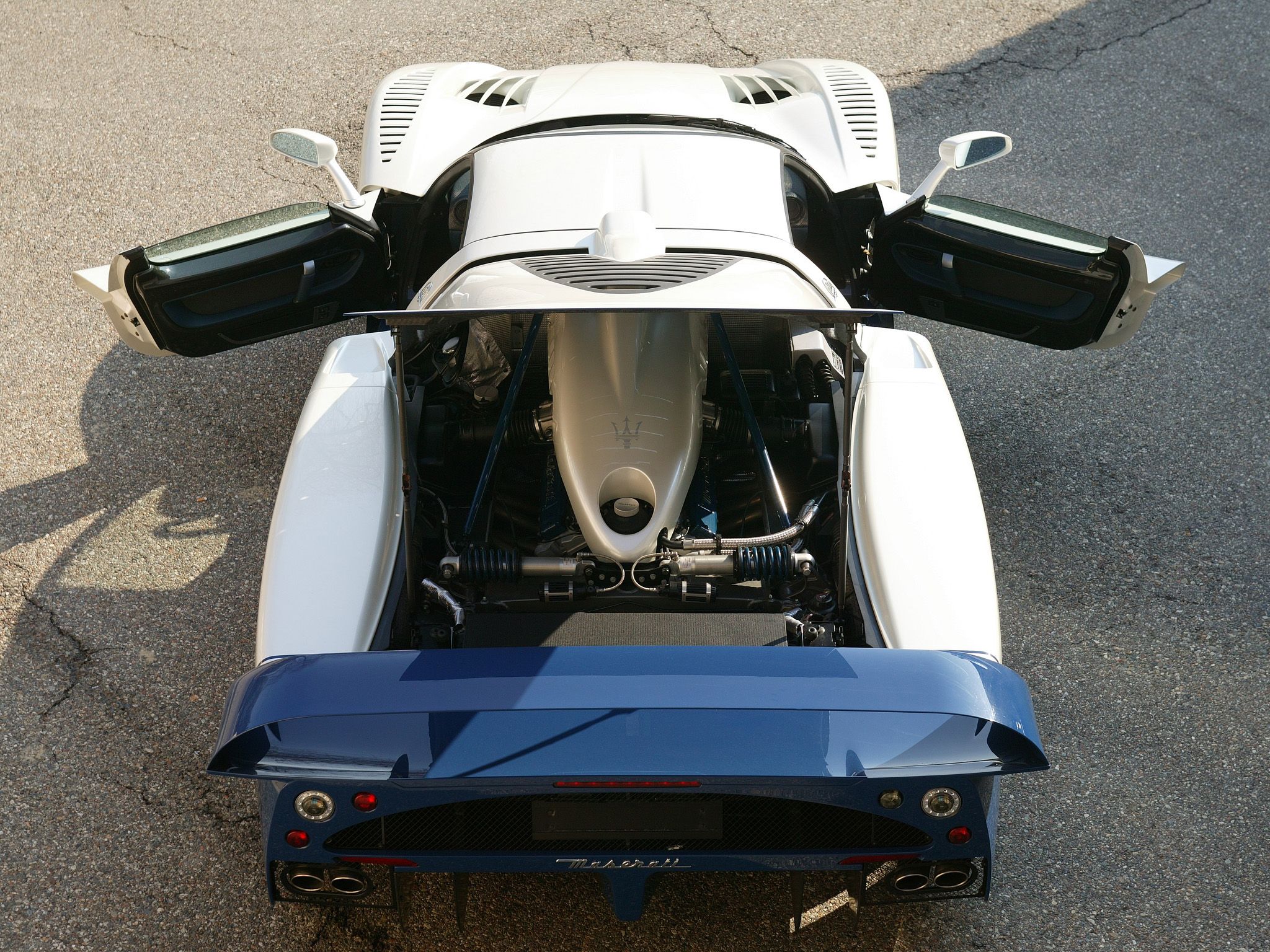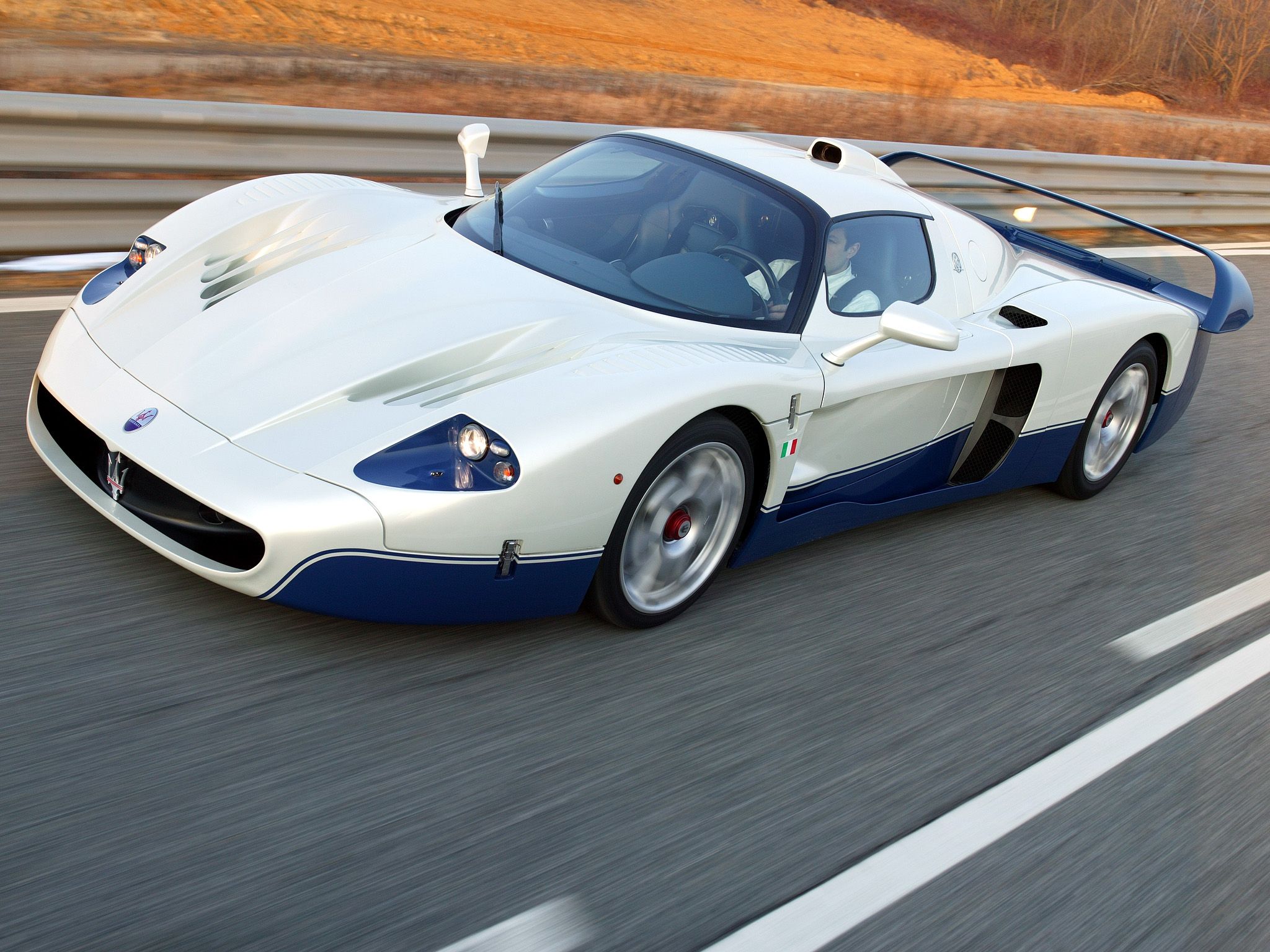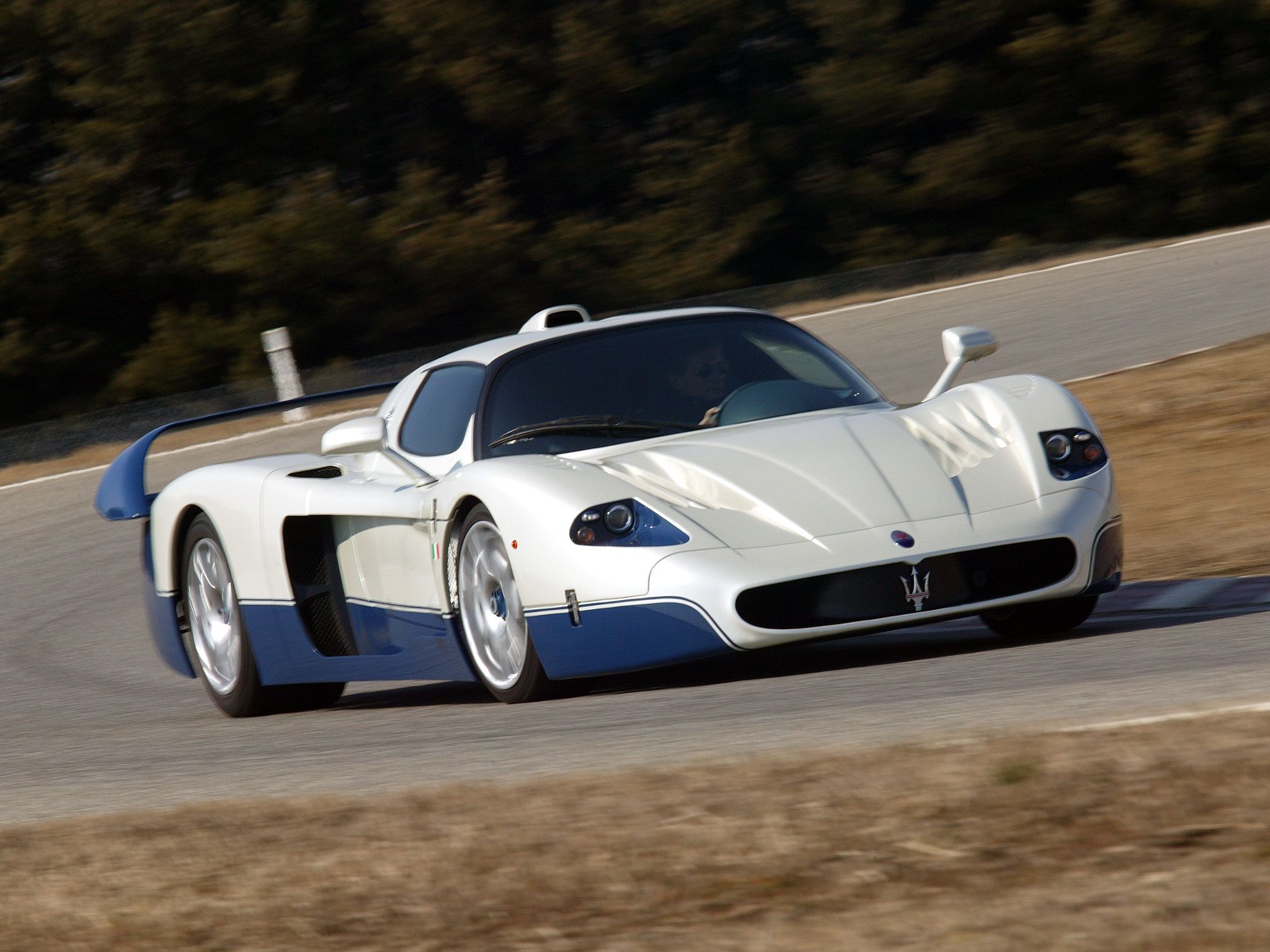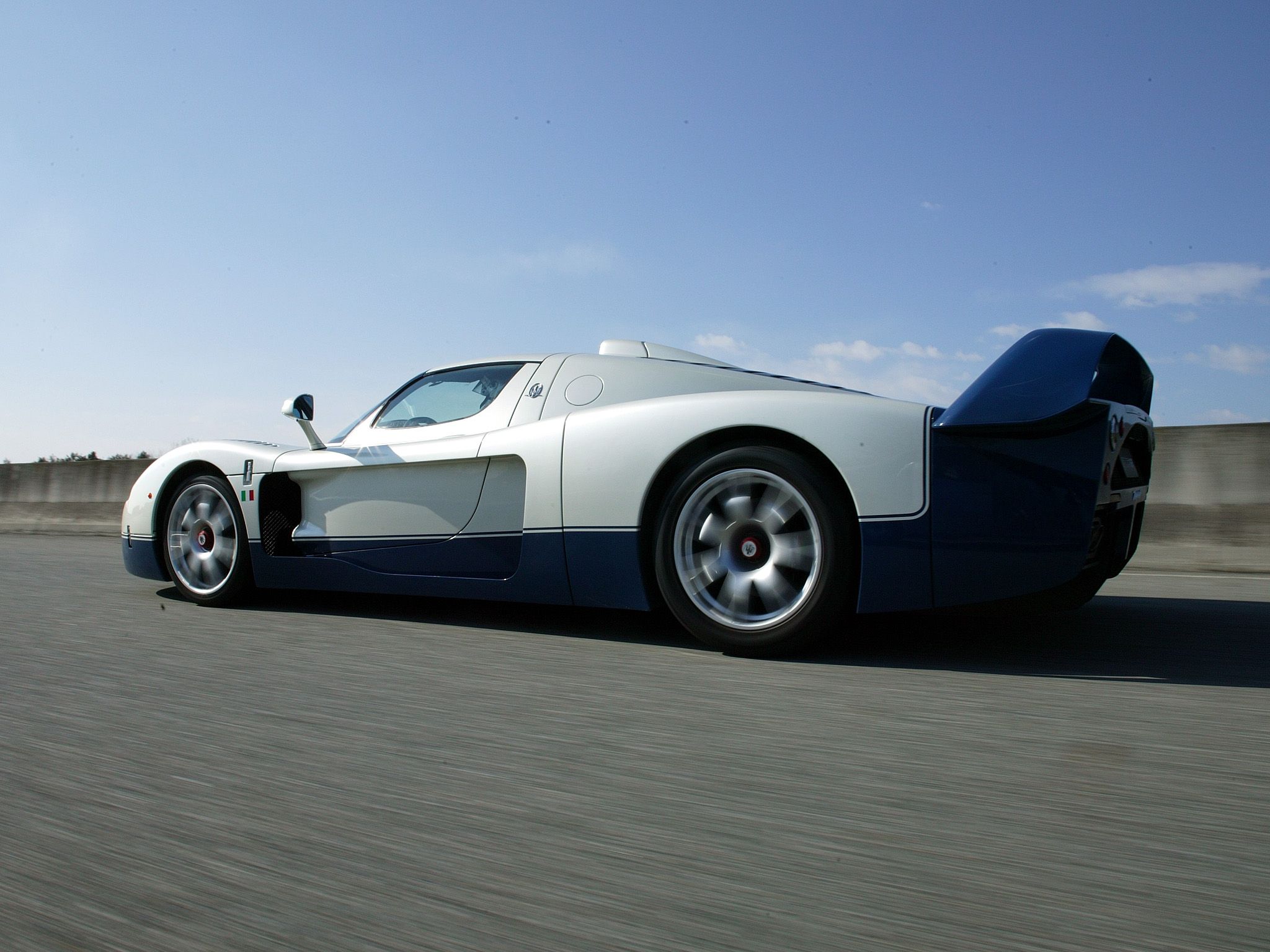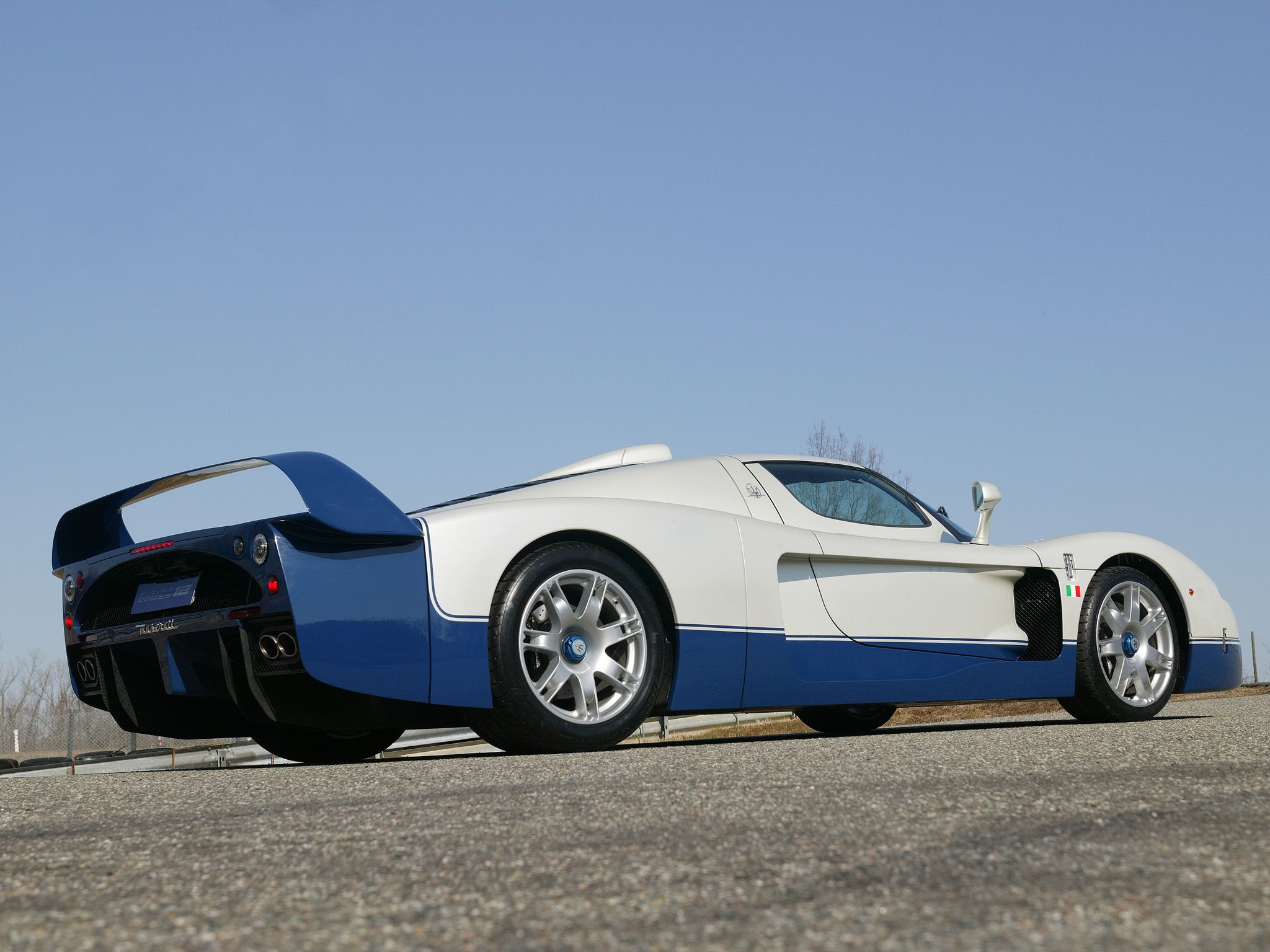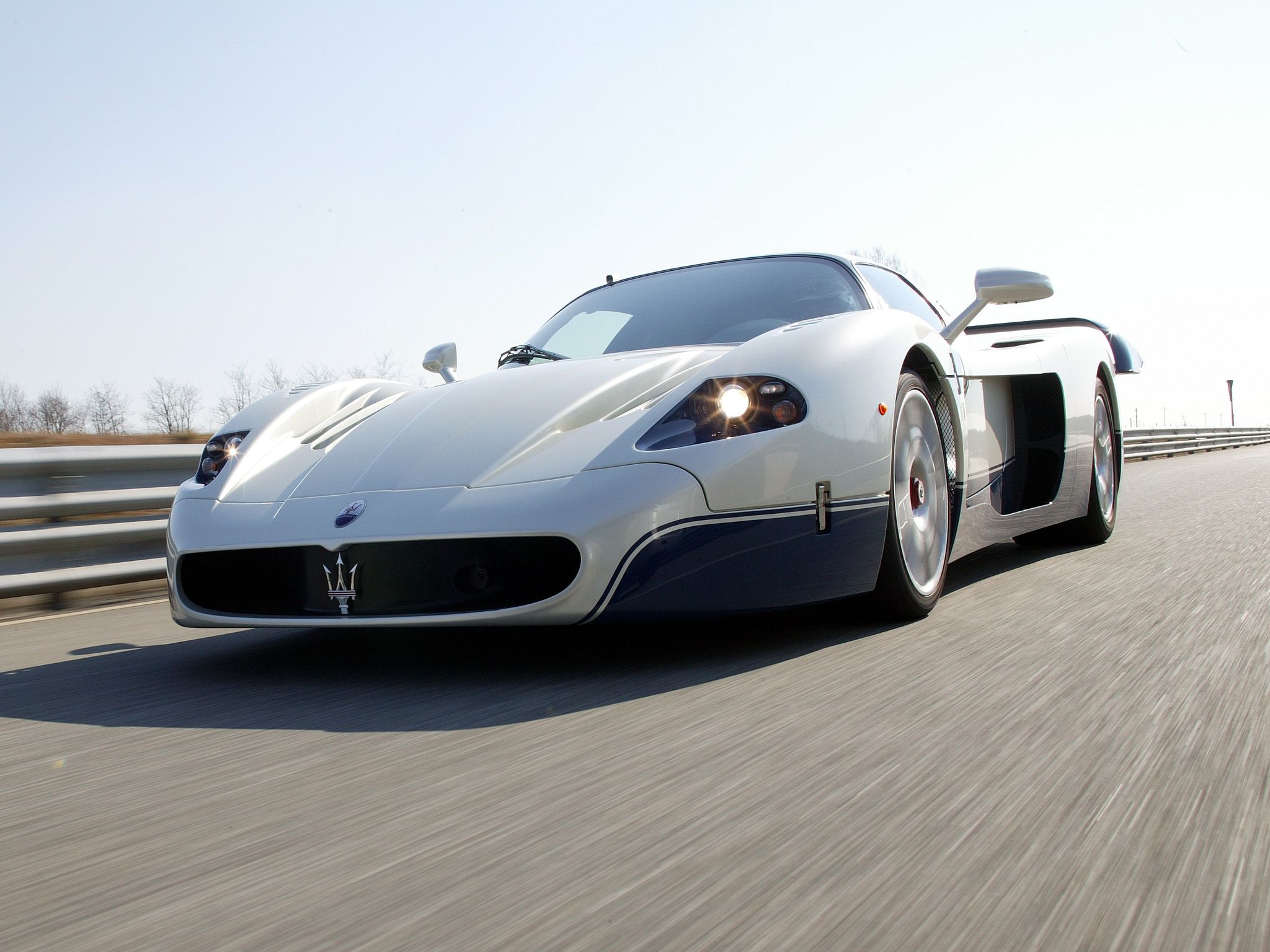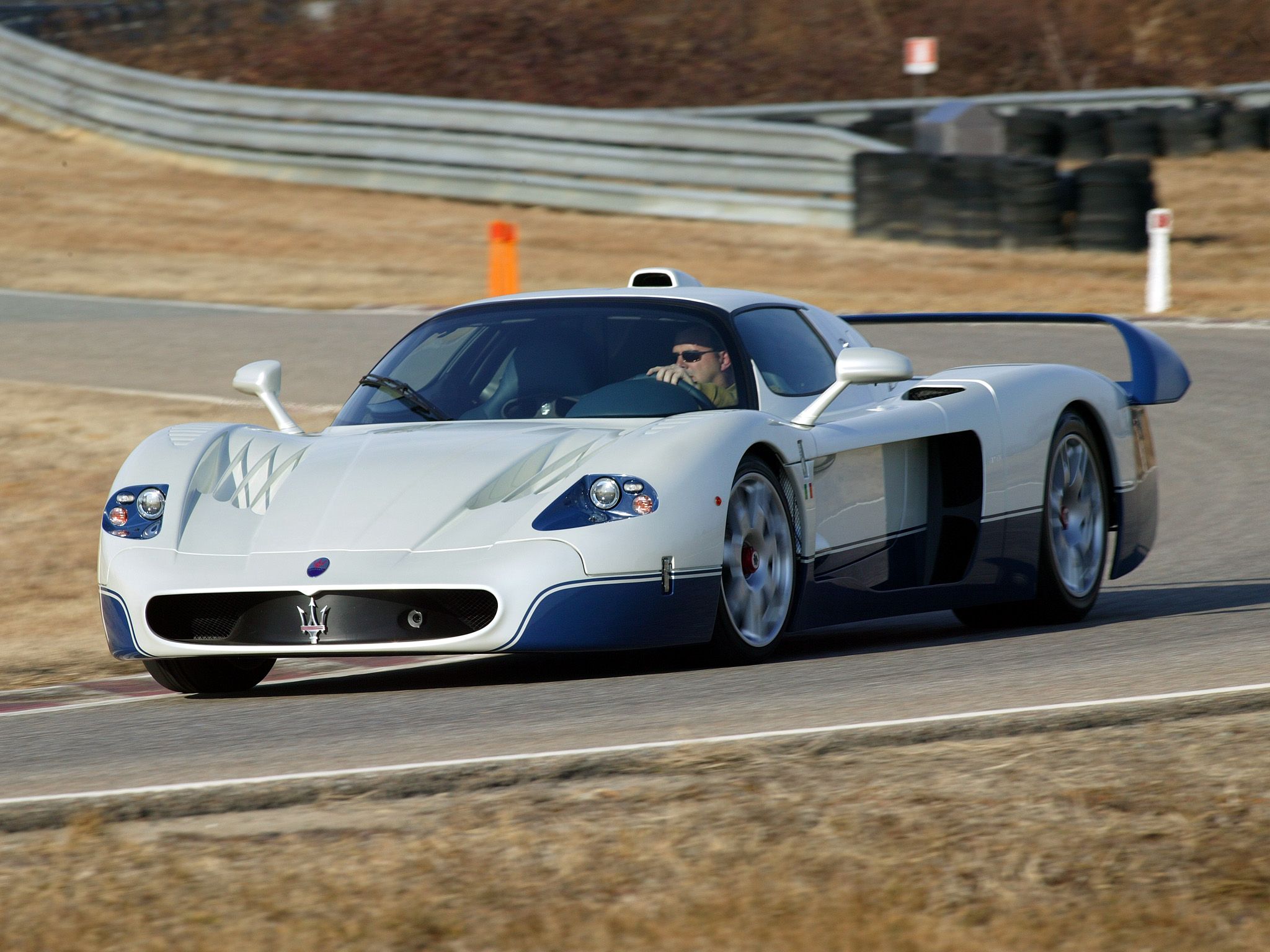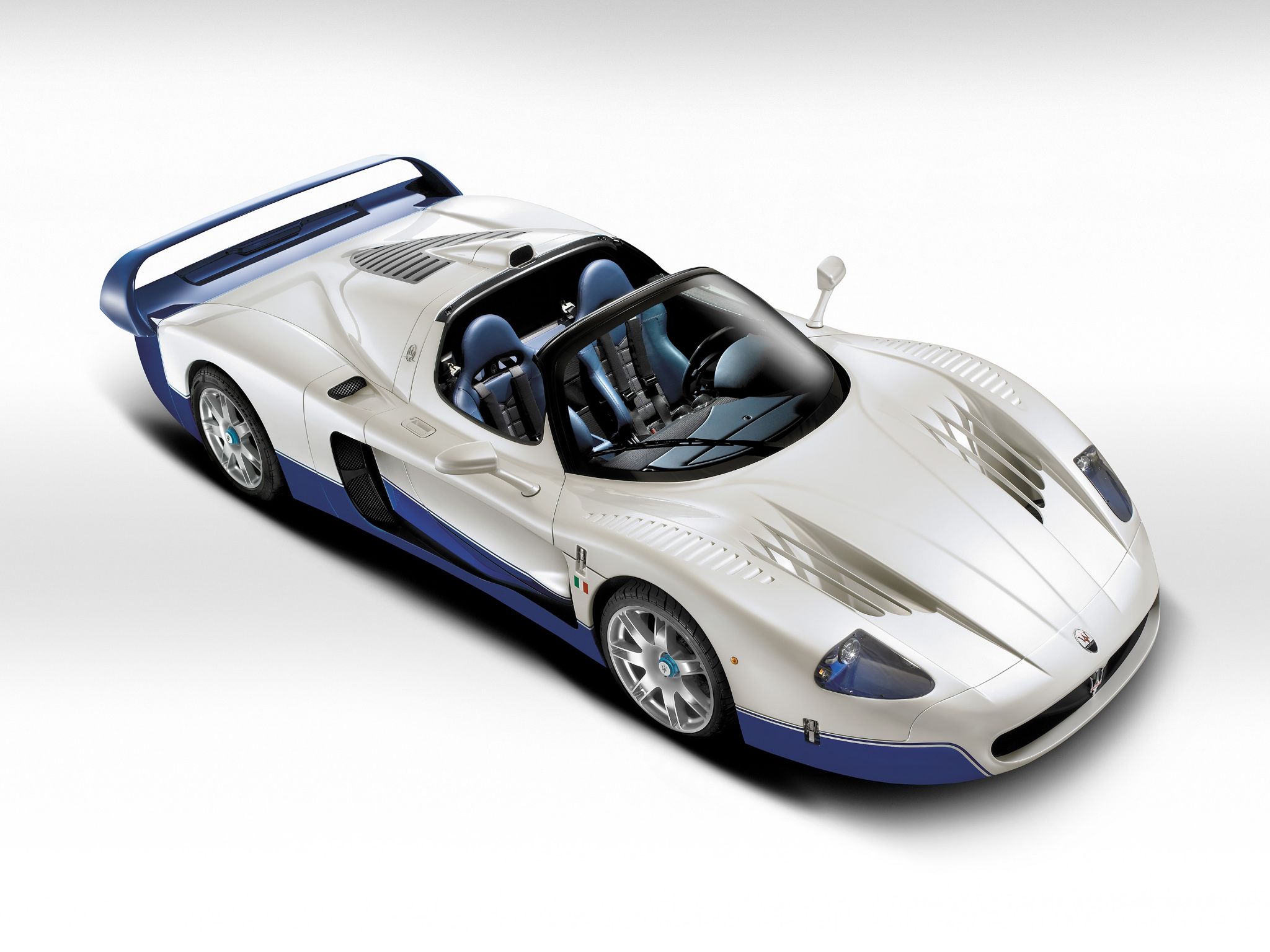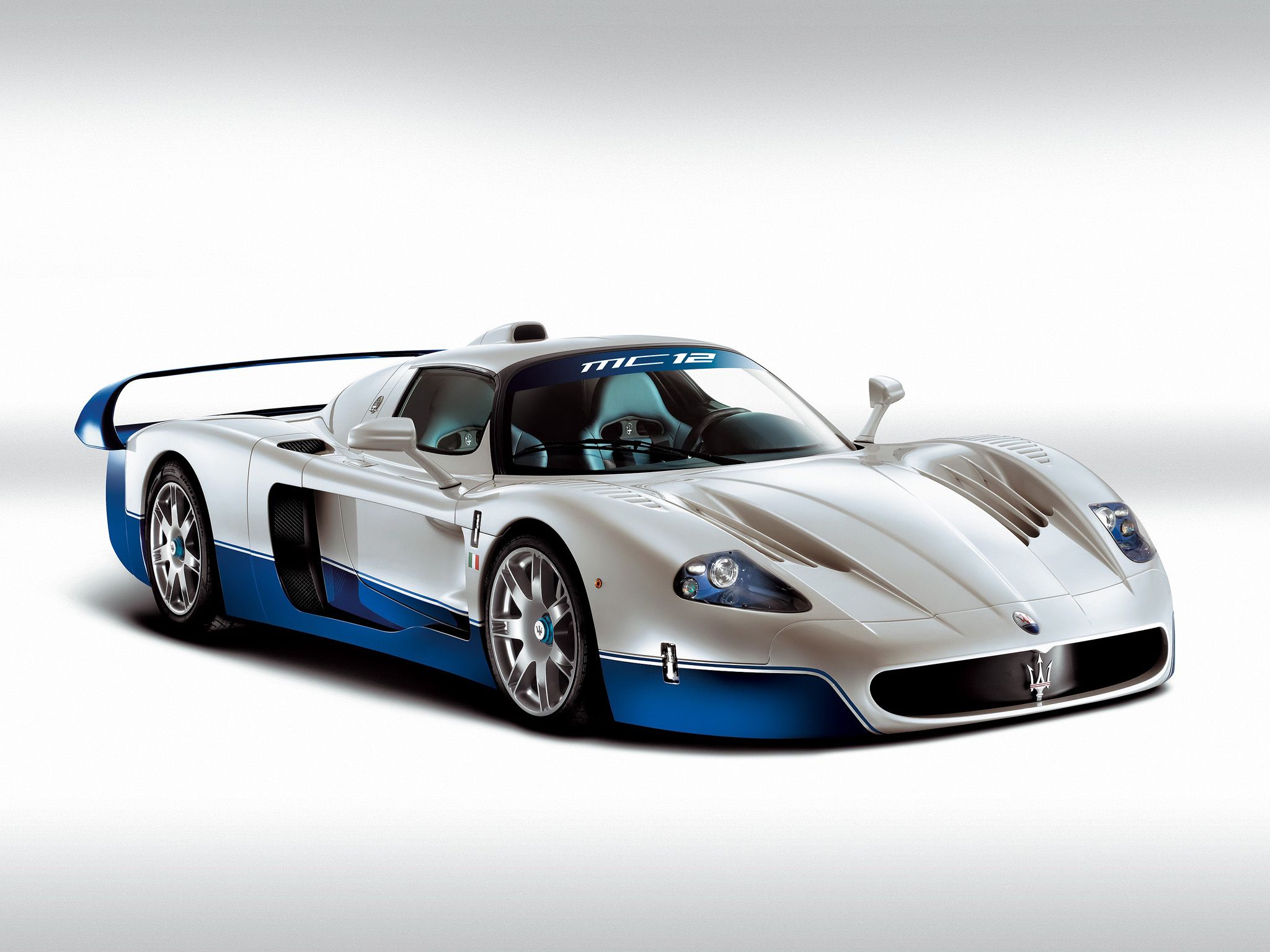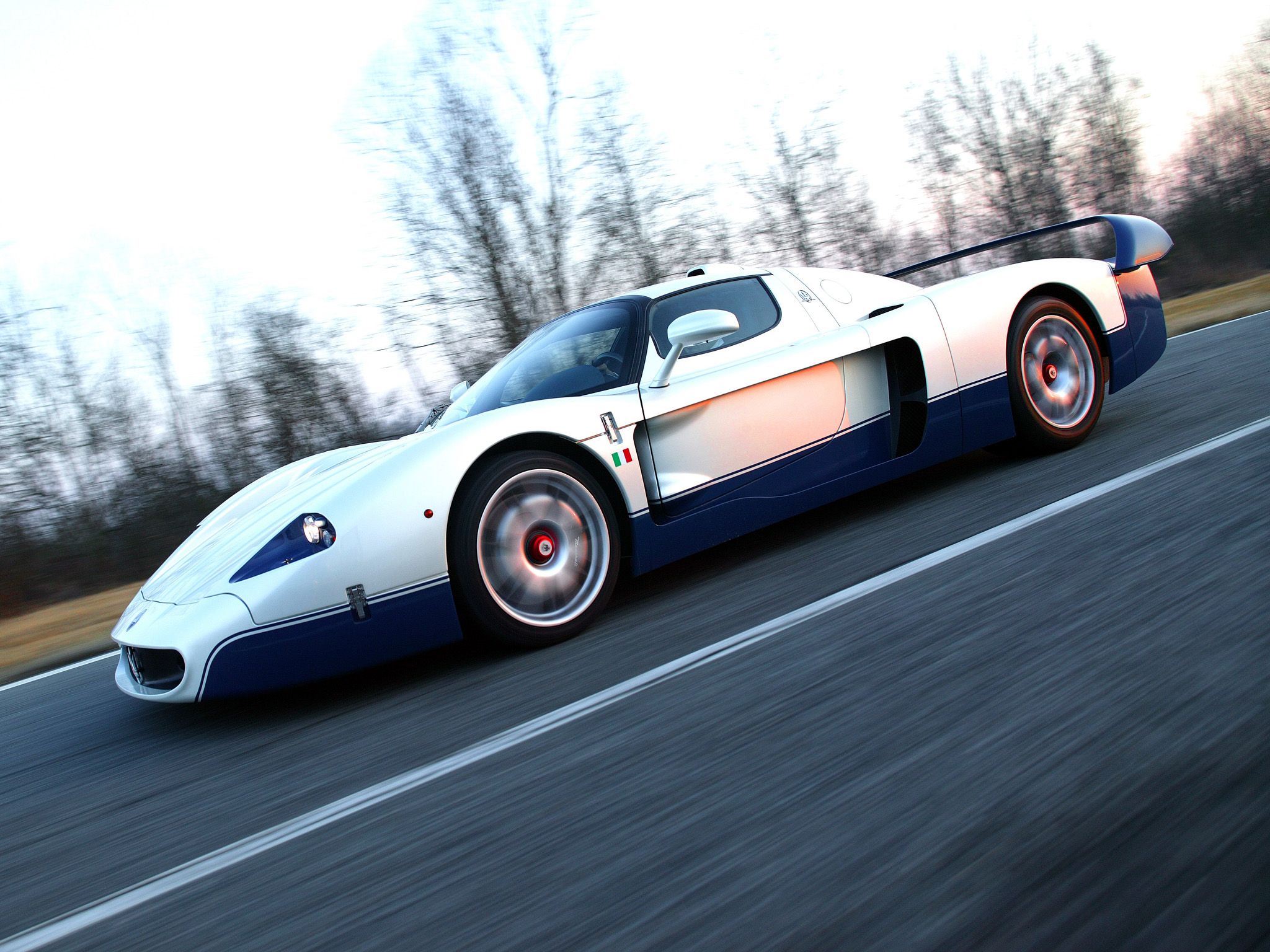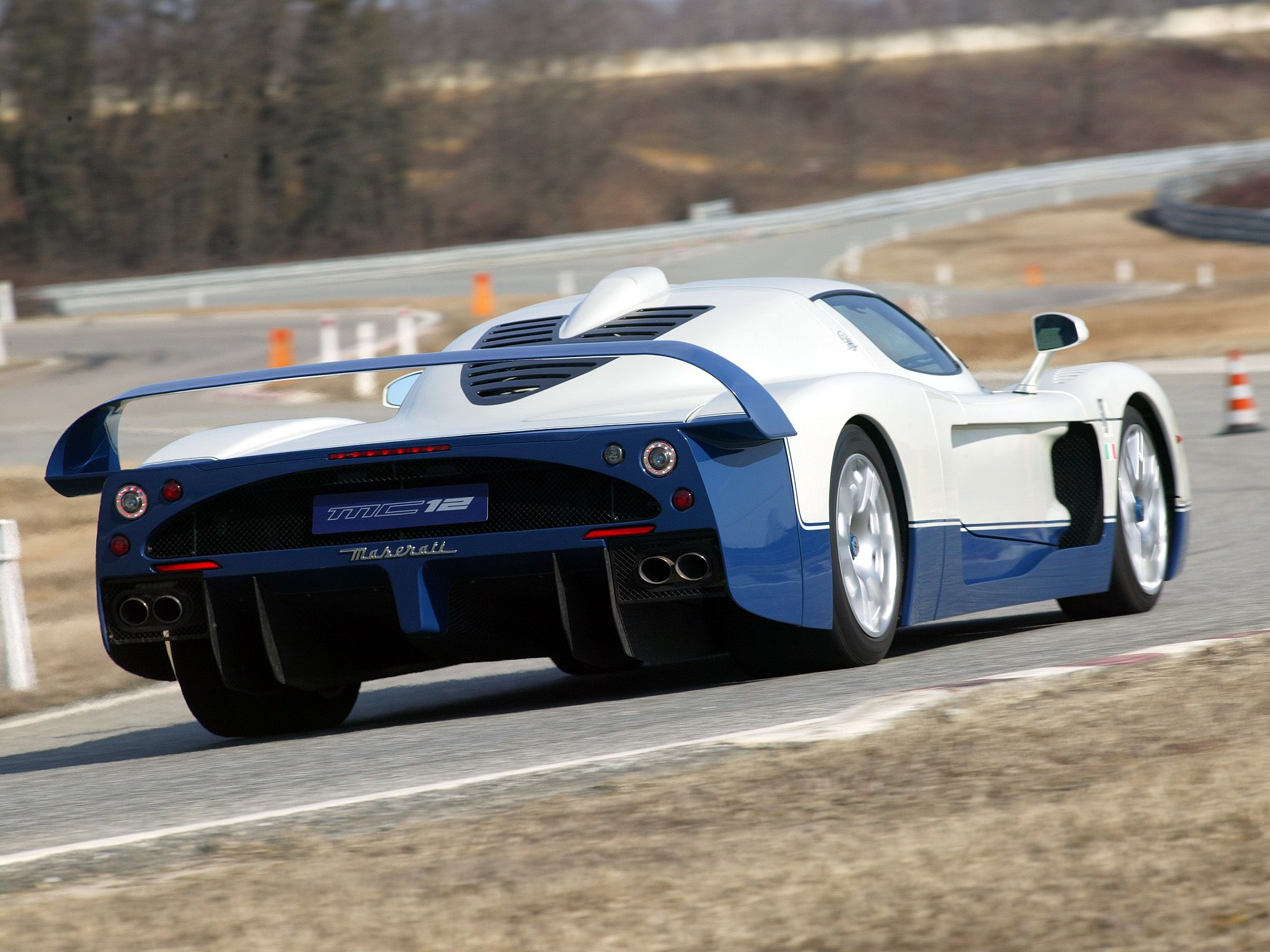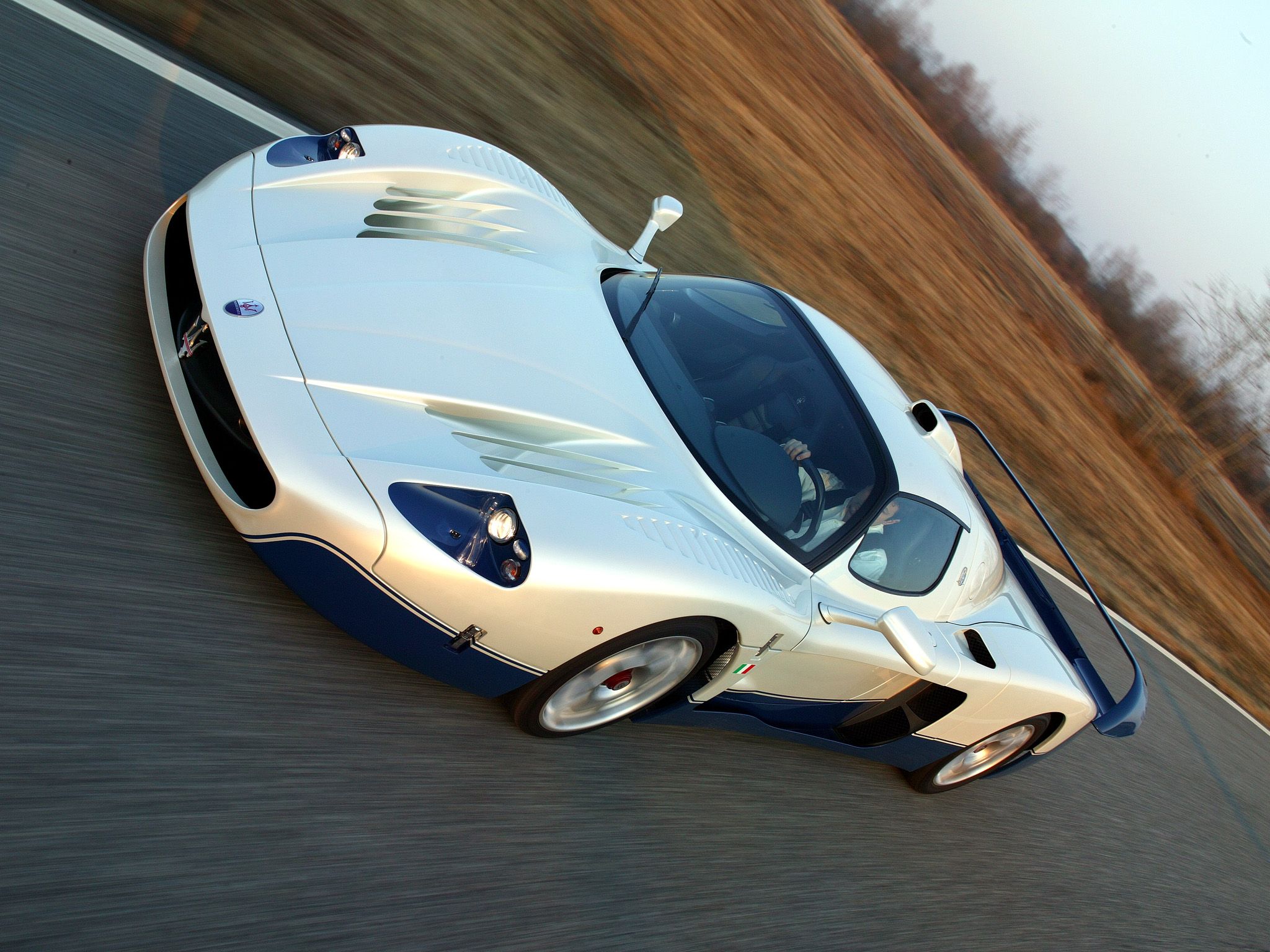Officially founded in 1914, Maserati->ke51 built its first race car->ke148 only 12 years later, in 1926. From then onward, the Italian brand grew to become one of the most successful race-car manufacturers, dominating the tracks the world over with cars such as the 250F, 200S, 1956-1958 Maserati 300S, 450S, and the 1959-1960 Maserati Tipo 61 "Birdcage." Maserati retired from factory racing in 1957, but continued to supply race cars to privateers until the late 1960s. Meanwhile, it focused on building sporty and luxurious road cars, rivaling products from Ferrari->ke252 and Aston Martin.->ke13 It was only in 2004 that Modena returned to factory racing.
That's when the MC12, Maserati's only modern supercar, was born.
Built on the same chassis Ferrari used for the Enzo->ke389 supercar (launched in 2002), the MC12 was actually a secondary project to Maserati's FIA GT-spec race car, being developed as an homologation vehicle.
Built in very limited quantities, the MC12 was radically different than the Enzo as far as aerodynamics go. Though not as aggressive as the race car it was based on, the MC12 was unique in this regard, as all the other mainstream supercar manufacturers focus on products specifically built for road use. While the road-going MC12 had certain modifications that made it more suitable for day-to-day driving, it had everything it needed to become a full-fledged race car except for a roll cage.
Updated 9/1/2015: Our man Jonathan Lopez took some pics at Monterey Car Week. Enjoy!
Keep reading to find out more about the Maserati MC12.
2004 - 2005 Maserati MC12
- Make: Array
- Model: 2004 - 2005 Maserati MC12
- Engine/Motor: 5.3 liter V8
- Horsepower: 280@6000
- Torque: 4000
- Transmission: 5-Speed Automatic
- [do not use] Vehicle Model: Array
Exterior
Although it was based heavily on the Ferrari Enzo, the Maserati MC12 received a body designed for maximum downforce across all surfaces. As a result, it was wider, longer, and slightly taller than its Ferrari-badged counterpart.
Styling wise, it was notable for its sharper nose and smoother curves, as well as the massive, 78-inch wide rear wing. The front fascia was highlighted by large headlamps positioned deep into the fenders, a wide grille featuring Maserati's trademark "Trident," and a vented front hood. The rear fascia was rather simple by comparison, with small, round taillights and an arched grille complementing the massive diffuser and wing.
The windshield was the only externally visible component shared with the Ferrari Enzo.
All cars were available only in a two-tone, white-and-blue livery. The lower part of the body and the rear fascia were finished in blue, while the rest of the car was painted in pearl white. The paint scheme was chosen as a tribute to the America Camoradi racing team that drove the Maserati Tipo 61 Birdcages to resounding victories in the early 1960s.
Significantly longer than an Enzo and wider than a Hummer H2,->ke419 the MC12 was criticized for its dimensions, as well as for lacking a rear window, which made it difficult to park. On the other hand, some noted that its weird design is what made it unique among other supercars.
Exterior Dimensions
|
Wheelbase |
2,800 MM (110.2 Inches) |
|
Length |
5,143 MM (202.5 in) |
|
Width |
2,100 MM (82.7 in) |
|
Height |
1,205 MM (47.4 in) |
|
Curb weight |
1,335 KG(2,943 lb) |
Interior
Even though the MC12 was designed as an homologation vehicle, the interior was created with both sportiness and luxury in mind. Simple and somewhat understated, the cockpit was far more upscale than the Ferrari Enzo's.
The dashboard, primarily covered in blue high-quality leather and carbon-fiber, had clean lines that resembled those of a grand tourer. The steering wheel was also trimmed in carbon-fiber and leather, while the instruments were organized around a prominent speedometer placed in front of the driver.
The center console included knobs for the climate control system, and two A/C vents (two more were mounted on the dashboard), and a "Maserati" emblem. Down below, Maserati added its trademark oval clock, as well as a blue engine Start button. The central tunnel, on the other hand, featured a titanium-like case that housed the remaining buttons, a storage compartment, and a 12-volt outlet.
The seats had a carbon-fiber structure and came wrapped in fabric and perforated leather. More carbon fiber was present on the door panels, as well as matching blue inserts, and buttons for the electric windows. The MC12 had no radio or sound system, for which it was also criticized. Seriously though, why would you want to hear music over its race-bred V-12?
Drivetrain
Speaking of which, the MC12 used a slightly modified version of the Enzo's 6.0-liter V-12. Output was dropped to 624 horsepower and 481 pound-feet of torque from the Enzo's 651-horsepower and 485-pound-feet rating, while the redline was decreased from 8,200 to 7,500 rpm.
The transmission, on the other hand, was identical to the Enzo's. Maserati only tuned it to different gear ratios and considered that was enough to change its name to "Cambiocorsa". It provided a shift time of just 150 milliseconds and had a final drive ratio of 4.10:1.
All these modifications made the MC12 significantly slower than the Enzo. While the Ferrari needed a lightning-quick 3.14 seconds to hit 60 mph, the Maserati took 3.5 ticks to achieve the same speed. It was also nearly a half-second slower in the quarter-mile, at 11.4 seconds. Its top speed was also inferior to the Enzo's 221-mph rating at 205 mph. It was still quicker than the most supercars of its era, though.
But despite being less powerful and slower in a straight line, the MC12 proved to be quicker than the Enzo around the Nurburgring Nordschleife.->ke999 In a test conducted by Evo Magazine in 2008, the Maserati lapped the "Green Hell" in 7:24.3 minutes, whereas the Enzo was more than a second slower at 7:25.7.
Drivetrain Specifications
|
Type |
DOHC 48-valve V-12, aluminum block and heads, port fuel injection |
|
Displacement |
5999cc |
|
Power |
624 HP @ 7,500 RPM |
|
Torque |
481 LB-FT @ 5,500 RPM |
|
Transmission |
6-speed manual with automated shifting and clutch |
|
0 to 60 mph |
3.5 seconds |
|
Standing 1/4-mile |
11.4 sec @ 135 mph |
|
Top speed |
205 MPH |
Prices
Limited to only 50 units -- 25 of which were built in 2004 and 25 in 2005 -- the MC12 was priced from $770,000, which made it more than $100K more expensive than the Enzo, prompting critics to say it was overpriced.
This wasn't far from truth, considering the MC12 was less powerful and slower than the Enzo (not to mention it had less brand cachet), but Maserati built fewer examples compared to the 400 Enzos that rolled out of Maranello. Despite complaints about the sticker, the Italians had no trouble pre-selling the entire production.
Maserati built 12 more cars in Corsa configuration, which were based on the GT1 race cars and restricted to the track. These were similar to the Enzo FXX, meaning Maserati was responsible for the storage and maintenance of the cars, while customers got to enjoy them on specially organized track days only. These were sold to carefully selected customers for nearly $1.5 million.
Nowadays, MC12s fetch more than $1 million at public auctions. Some versions, depending on their state and mileage, can sell for up to $2 million.
Competition
Ferrari Enzo
Not including the Enzo, arguably the most coveted supercar of the early 2000s, here would be preposterous. As previously mentioned, the Enzo and the MC12 shared most underpinnings, including the 6.0-liter V-12. What made the Ferrari special was that its powerplant had an extra 27 horsepower and four pound-feet of twist to play with.
The Enzo went into production in 2002 and was discontinued in 2004 after only 400 units were built. Though it was built in greater numbers than the MC12 and at a more affordable price (around $660,000), the Enzo was considered a lot more exotic than the Maserati. The Enzo has also doubled in value since going out of production, now selling for more than $1 million at auctions.
Read more about the Ferrari Enzo here.
Porsche Carrera GT
The Carrera GT->ke2124 arrived at the same time as the MC12, as Porsche’s->ke1 first flagship supercar since the 1998 Porsche 911 GT1 "Strassenversion," which was launched in 1997. But unlike the MC12, the Carrera GT used a smaller, 5.7-liter V-10 engine producing a bit less power, at 612 horses and 435 pound-feet of twist. Another major difference was that the unit mated to a six-speed manual. Acceleration was slightly inferior to the MC12's, as the Carrera GT needed 3.8 seconds to hit 60 mph, but top speed was identical at 205 mph.
Significantly less exclusive than Maserati's highly limited supercar, the Carrera GT was built in 1,270 units built between 2004 and 2007. At least 604 of them were sold in North America for a starting price of $448,000, a value that hasn't changed much as of 2015.
Find out more about the Porsche Carrera GT here.
Conclusion
Despite its awkward appearance and being overshadowed by the Ferrari Enzo, the Maserati MC12 remains one of the most influential supercars of the mid-2000s. Built around a full-fledged race car, it was more of a driver's car than many other supercars of the era and had one of the most luxurious interiors in its segment. It blended both Maserati's early racing heritage and high-quality craftsmanship, and that's what made it perfect in the eyes of Maserati enthusiasts and supercar collectors.


